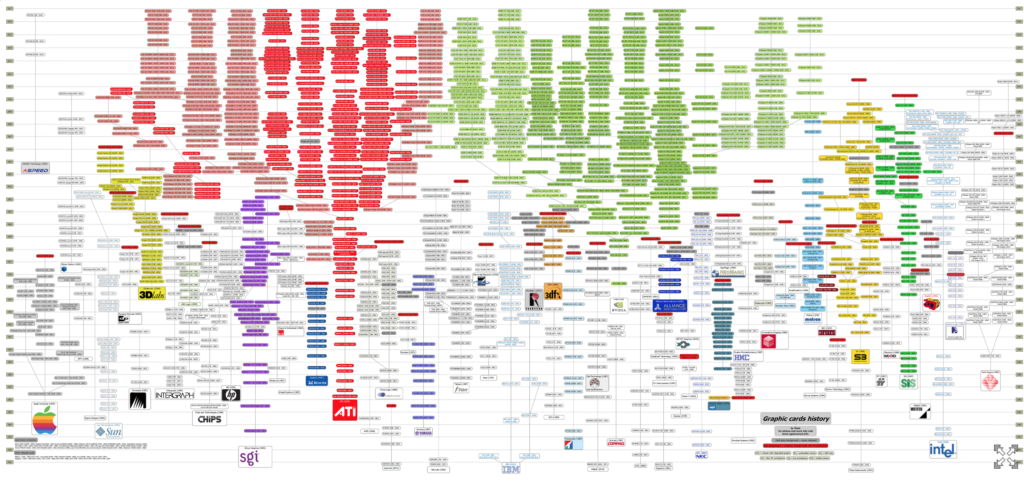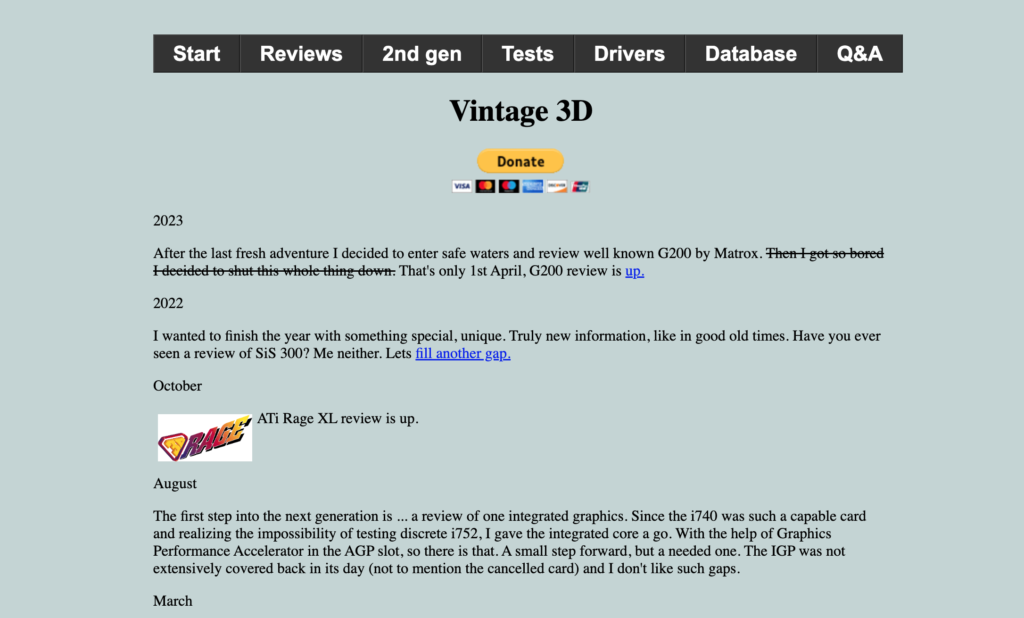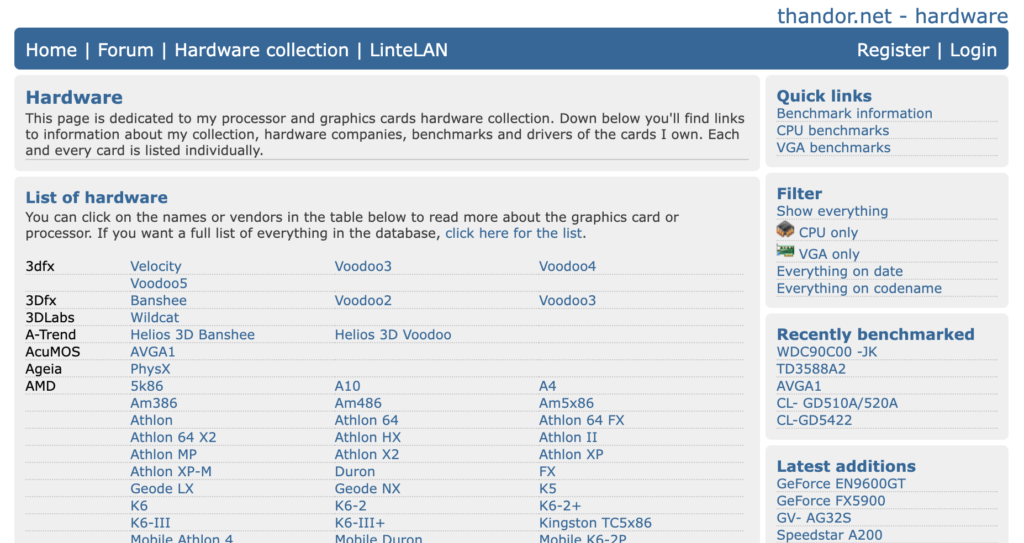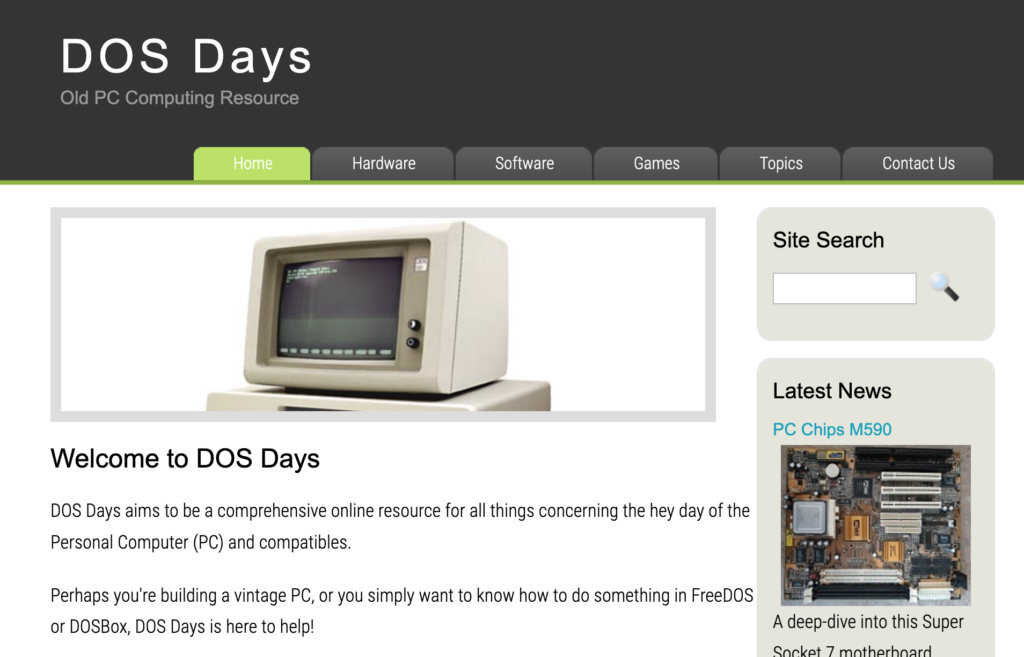Whether you’re into 1980’s computing or Windows 98/XP gaming… You’ll no doubt have put some thought into the video card your vintage computer has (or will have). Some are hunting for the 3D accelerator of the late 90s, while others want a faster DOS card for Doom. Others just want to pick the best CGA/EGA or monochrome!
This isn’t going to be a long post, I don’t have time… and the chances I’d do the topic justice are slim anyway… but I want to make an incredible resource easier to find on the internet… and since I can’t “SEO” someone else’s website, the best I can do is provide a page that links to some of the best resources out there.
#1. The VGA Museum
These guys have no doubt come up in your Google searches for various cards… but I want to point out a few things you might not have noticed. FIRST is the massive history of computer video cards dating back to the 80s that shows some of the lesser-known brands and frankly… the innovations by some companies that eventually were bought out by others.

This is just a blurry screenshot, they have a high resolution version of this where you can Zoom in and read about some of the big graphics producers and small. If you ever wanted to build a period-accurate machine… or perhaps you just wanted to know what else was available at the time your machine was built, all you have to do is skim that year left-to-right and you’ll see what kinds of cards that were available at the time – both commercial and consumer.
The second thing I’d note is, each card/chipset on their site often has a datasheet and even driver link in the fine print near the bottom. Those can be handy if you want to learn a lot more about your card.
#2. Vintage 3D

This guy has spent the time I’ve always wanted to spend studying some of the top 3D accelerators. He’s matched them up against the previous generation, or what competing cards were at the time. It’s here that I discovered the 3D capabilities of some 2D cards like the S3 Trio3D and early Trident PCI cards. He’s also written up a full history of computer graphics in his prolog page. I also love the “unrealized” page of barely or never released cards. If you ever wondered what games made your particular card ‘shine’ in it’s day, and where it was in the marketplace at the time, this is your resource.
#3. Dependency Injection

I know this guy’s active on Vogons, I don’t know if his website will be up a long time or if he’s still actively updating it, but specifically… if you want to get some solid info on various VLB cards, this guy’s benchmarks are solid. One page does a bit of a comparison of various VLB graphics cards that covers the bulk of the top chipsets of the time.
NOTE: He also makes the list because his website isn’t easy to find.
#4. Thandor dot Net

I have no idea who this fellow is, but he has some very obscure cards in his collection and he does some really comprehensive benchmarks of early PCI cards and some ISA. He doesn’t stop there though, he also gives some history behind each, often includes driver files AND… multiple images that are high resolution enough to spot components if your trying to repair a card of your own.
#5. Dos Days UK

Chances are if your looking into vintage PC stuff, you’ve already run across his website… but I love that he’s even included original advertisements, history and testing of various hardware. His sound card information is second to none… but this article is mainly focused on vintage video cards… so, I’m linking / discussing that section.
An honourable mention goes to BitSavers component section…
These guys have Datasheets to early Oak, Trident and other video card chipsets. They also have original advertisments and sometimes the original manuals to some of the earliest computer parts you can imagine.
The purpose of this article…
If you go to Google and start searching up things like “the history of computer graphics” or “vintage graphics cards by date” you’re not going to find anything useful. You certainly won’t find a list… or even see a discussion on just how bad (or Good) Oak was vs PC Chips… or what else was available beyond Hercules graphics in the era of TTL 9-Pin monitors and CGA graphics… but, VGA museum’s list and some of these other resources mentioned here will answer that.
Not only will they give you a really good idea of what was available at the time, but they all often include manufacturer datasheets, drivers and benchmarks so you have a solid idea of what you might want to look for or try yourself on your machine(s).
They don’t always show up at the top of search results, but they’re my favorite resources when I’m trying to decide things like “Do I need another EGA card in my personal collection?” (Dos Days would tell you) Or… Which of these cards is better… that PCI or this PCI. Perhaps, like me… You’ve wondered… This laptop came with a Trident Blade3D card, so I’m stuck with it… is it any good? What games can it play? (Vintage3D answers that).
Maybe you’ve wondered… What’s the difference between this VLB video card or that one? Well, I’d say Dependency’s website answers that and many other VLB questions.
The Ultimate Vintage Graphics Question
BUT… if you’re wondering something like “What games can my card play?”. Not only do some of the sites above answer those, but you might find it handy to know that PC Gaming World has a whole list of all the games that support DirectX 2-5, Direct Draw and early Windows Acceleration.
There’s also a great resource here that shows which cards may have trouble with certain DOS based games like side-scrolling bugs in Commander Keen.